Located on a tiny peninsula of West Lake, Tran Quoc Pagoda is the oldest and holiest Buddhist pagoda with a long-standing history of more than 1,500 years in Hanoi. Established as a Buddhist centre of Thang Long (Hanoi's old name) under the Ly - Tran dynasties, Tran Quoc Pagoda has now become an attractive spiritual destination, attracting large numbers of visitors each year. In 2016, Tran Quoc Pagoda was on the list of the world's 16 most beautiful pagodas by the Daily Mail, a prestigious British newspaper.
1. Where is Tran Quoc Pagoda
Tran Quoc Pagoda is located on a small island in the southeastern part of West Lake, in Tay Ho District, Hanoi. You can reach it by crossing a small bridge at no 46, Thanh Nien Street.
The pagoda is close to several other popular attractions like Quan Thanh Temple and Ho Chi Minh Mausoleum,... This central location makes Tran Quoc Pagoda a convenient stop or starting point on any Hanoi itinerary. From the pagoda, you can easily explore the city's culture and try delicious Hanoi food. There are also many beautiful sights nearby to enjoy.
How to get to Tran Quoc Pagoda
2. Tran Quoc Pagoda's Longstanding History
Tran Quoc Pagoda was originally called Khai Quoc Pagoda, built in 541 during the early Ly Dynasty. At that time, the pagoda was located near the banks of the Red River, so when the dam collapsed in 1615 (during the reign of King Le Trung Hung), the pagoda was moved inside the Yen Phu Dam, near the Kim Nguu islet. Then, in the 17th century, Trịnh Lords built the Co Ngu Dam (Thanh Nien Street now) to connect with Kim Nguu islet. The pagoda changed its name to Tran Quoc Pagoda during the reign of King Le Hy Tong (1681 - 1705) with the meaning that this would be a place to help people avoid natural disasters by bringing them a peaceful life, and that name remains till today.
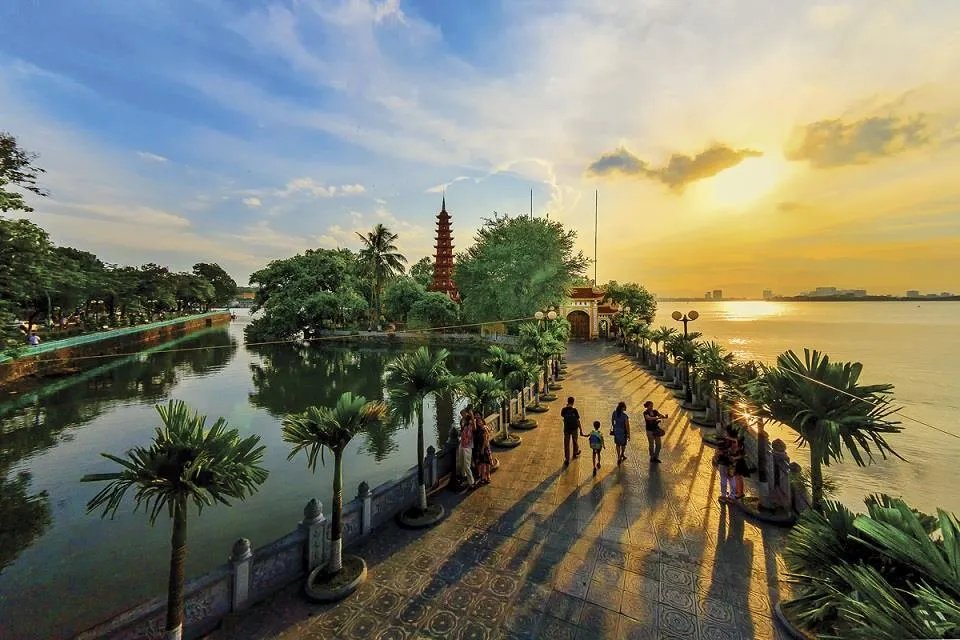
Tran Quoc Pagoda is located right on the shore of West Lake.
In the past, Tran Quoc Pagoda was the Buddhist centre of Thang Long Imperial citadel. Kings Ly and Tran frequently visited the pagoda on holidays and Tet, praying for the nation's prosperity and peace, therefore several palaces were built to serve the kings like the Thuy Hoa Palace, the Ham Nguyen Palace.
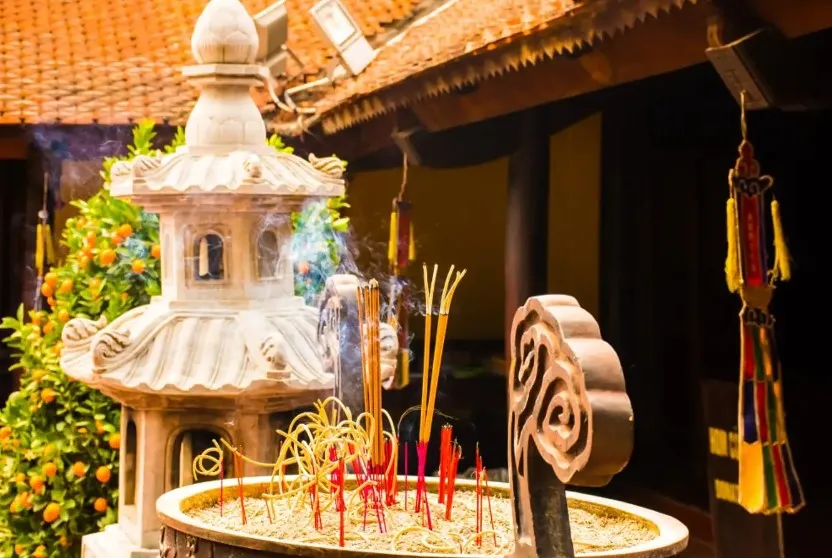
Now recognized as one of Hanoi's most iconic landmarks, Tran Quoc Pagoda draws visitors and pilgrims alike.
3. Tran Quoc Pagoda's Impressive Architecture
As an ancient Buddhist pagoda built for a long time, Tran Quoc Pagoda’s appearance has changed significantly. The size and architecture of the temple now are the result of a major restoration in 1815. The total area of the pagoda, including the tower, garden, ancestral house, and upper hall, is more than 3000m2.
- The pagoda's general structure
The pagoda belongs to Theravada Buddhism in Vietnam with the structure and architecture following to strict principles, including 3 main layers: Tien Đuong (the main hall), Thuong Vien (upper hall), Nha Thieu Huong (incense crematorium), which connects together in the form of the word Công (工).
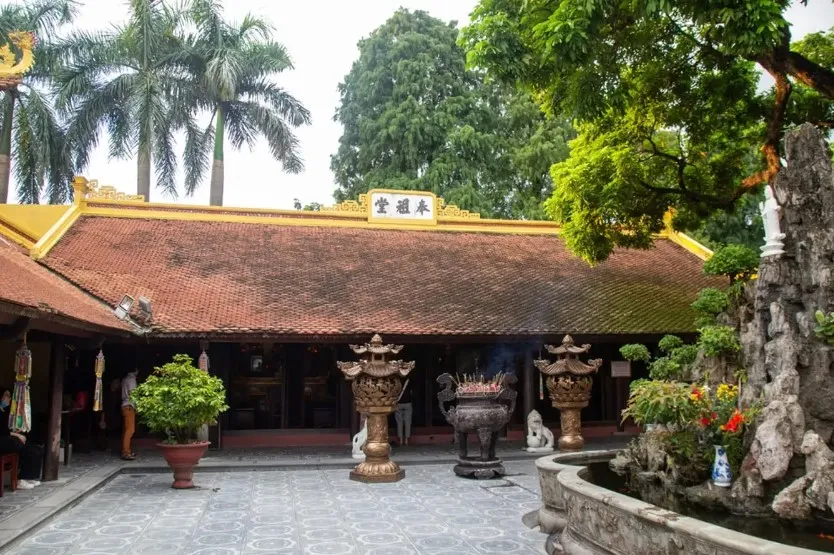
Tran Quoc Pagoda's main hall
The main hall faces west, behind it is the Tam Bao house. Two corridors are located on either side of the incense crematorium and the upper hall. Behind the upper hall is the bell tower placed on the axis of the main hall with the three-room architecture with a roof stacked with matches. The ancestral house is located to the left of the upper hall. The stele house is on the left of the main hall. It contains 14 important engraved stelae with many historical and cultural values.
- Lotus-shaped Stupa (Bao Thap)
Within the serene grounds of Tran Quoc Pagoda, stands the magnificent the Bao Thap. This imposing structure is not just a unique architectural masterpiece, but it also holds profound spiritual significance, contributing to the beauty and sacredness of this ancient temple.
In 1998, the hexagonal lotus-shaped tower (Bao Thap) was built, and in 2003 it was completed, adorning the temple's garden. The Stupa has a total of 11 storeys, with an area of about 10,5m2. On each tower storey, there is a white precious stone statue of Amitabha Buddha located in each arched doorway.
In particular, on the top is a 9-story lotus (Cuu Pham Lien Hoa) carved from precious stones, creating a majestic, sacred, and very soft beauty. Opposite to the tower is the bodhi tree presented by the President of India in 1959 during his visit to Hanoi. This Bodhi tree was specially extracted from the Bodh Gaya tree - where Shakyamuni Buddha sat under and practised his religion more than 25 centuries ago.
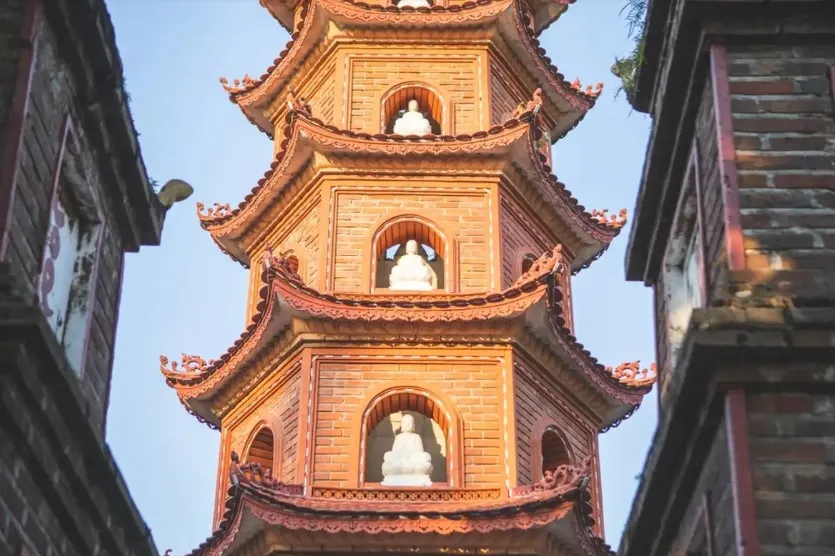
Cuu Pham Lien Hoa tower
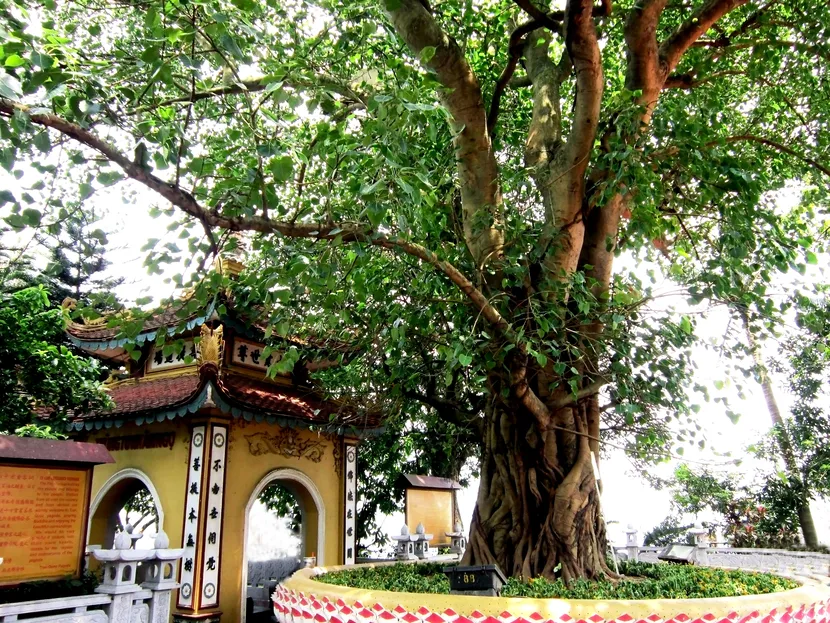
The sacred Bodhi tree at Tran Quoc Pagoda is a symbol of kindness and a loving heart.
The addition of the stupa has enhanced the beauty and sacredness of Tran Quoc Pagoda, attracting numerous Buddhists and tourists to visit.
- The statue of Buddha Shakyamuni entering Nirvana
Tran Quoc Pagoda houses a remarkable collection of Buddha and Bodhisattva statues, many of which are displayed in the main hall. Among these treasures, the most significant is a wooden statue of Shakyamuni Buddha entering Nirvana, coated in lacquer. This depiction of the Buddha's passing into ultimate peace adds a profound layer of spiritual significance to the already serene atmosphere of the hall.
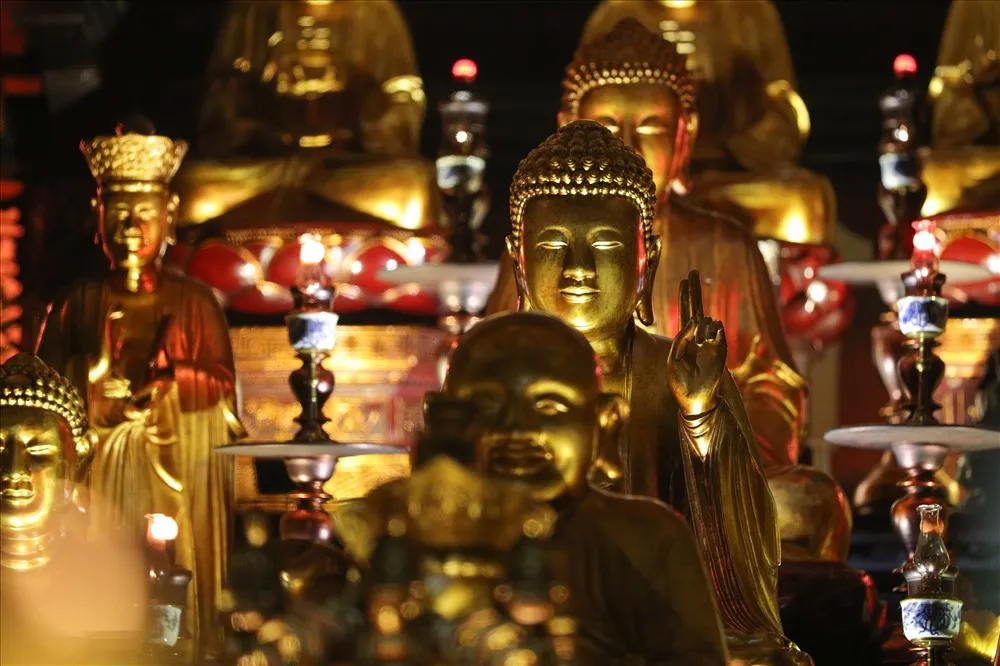
4. Tran Quoc Pagoda's opening hours
The pagoda is open to visitors all days, from 8:00 AM - 11:30 AM and 1:30 PM - 4:00 PM.
On the 1st and full moon day of every lunar month, the pagoda welcomes guests from 6:00 AM to 6:00 PM.
Particularly on New Year's Eve, Tran Quoc Pagoda is open all night for Buddhists to visit and pray for the best new year, sharing the transition time from the old year to the new year.
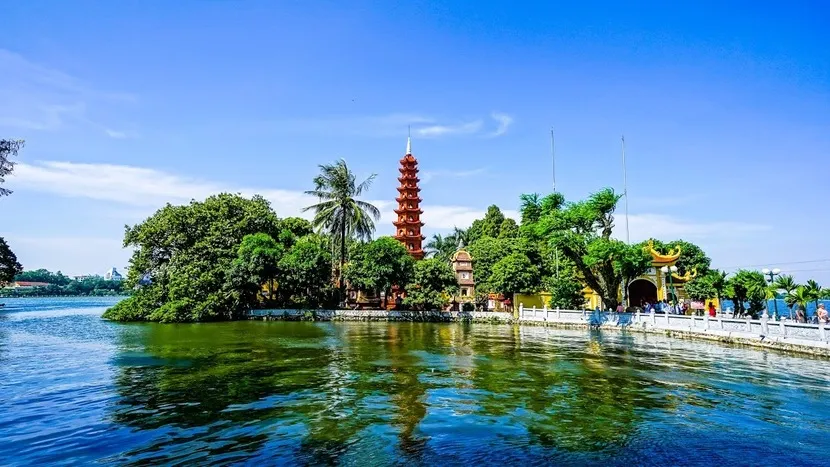
5. The entrance ticket
The entrance ticket to Tran Quoc Pagoda is free.
6. Dresscode
While there is no strict dress code enforced at the Tran Quoc Pagoda, it is generally recommended to dress modestly and respectfully when visiting religious sites in Vietnam. Clothing should cover your shoulders, chest, and knees. Both men and women should avoid wearing sleeveless tops, shorts, and miniskirts. And to show respect to the gods, please take off your shoes, umbrella and hats before entering into the pagoda and shrines.
Through the ups and downs, Tran Quoc Pagoda still lies majestically, bringing a peaceful and ancient look to the heart of bustling Hanoi. Every year, the pagoda attracts not only many Buddhists from all over the world, but also local and foreign tourists who come to find out about religions in Vietnam.
If you're interested in booking a package tour related to this article, don't hesitate to send IZITOUR an email to [email protected]. Please let us know your detailed inquiry. Our local travel consultants are ready to craft your perfect travel itinerary and make it unforgettable.
All-inclusive Vietnam Tours from $44/pax/day
See more:
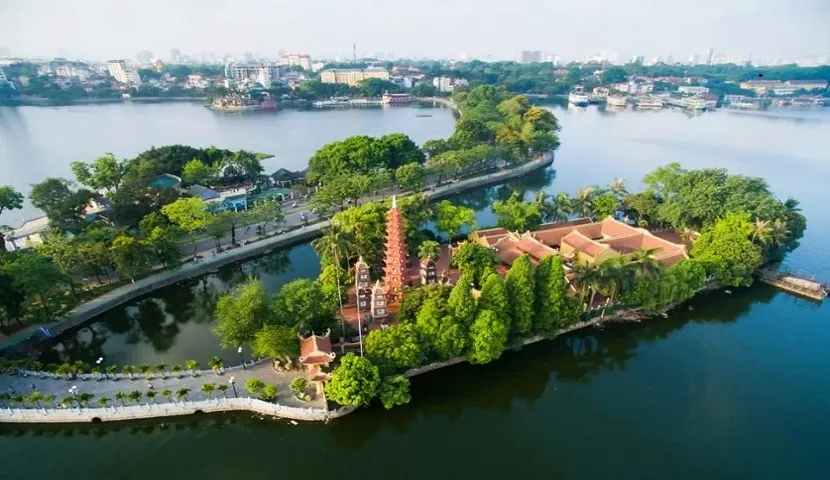







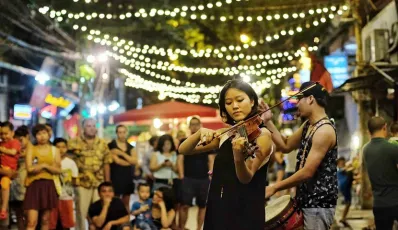

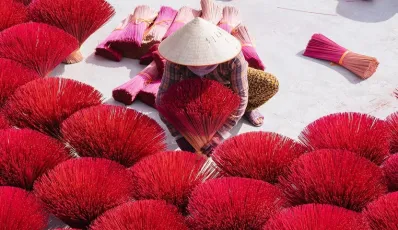

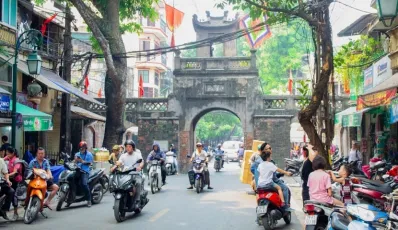
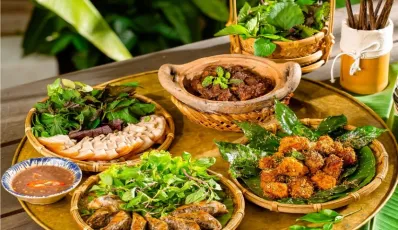
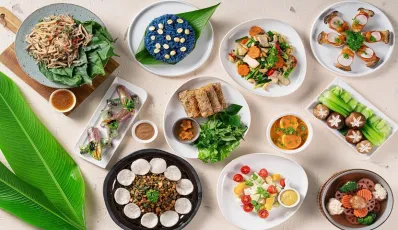
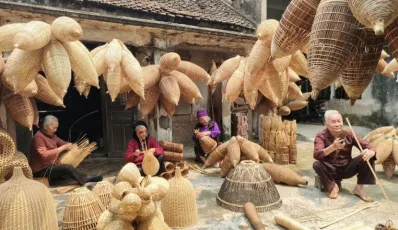
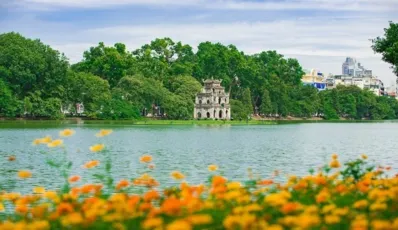




 TRAVELERS' CHOICE 2025
TRAVELERS' CHOICE 2025 


